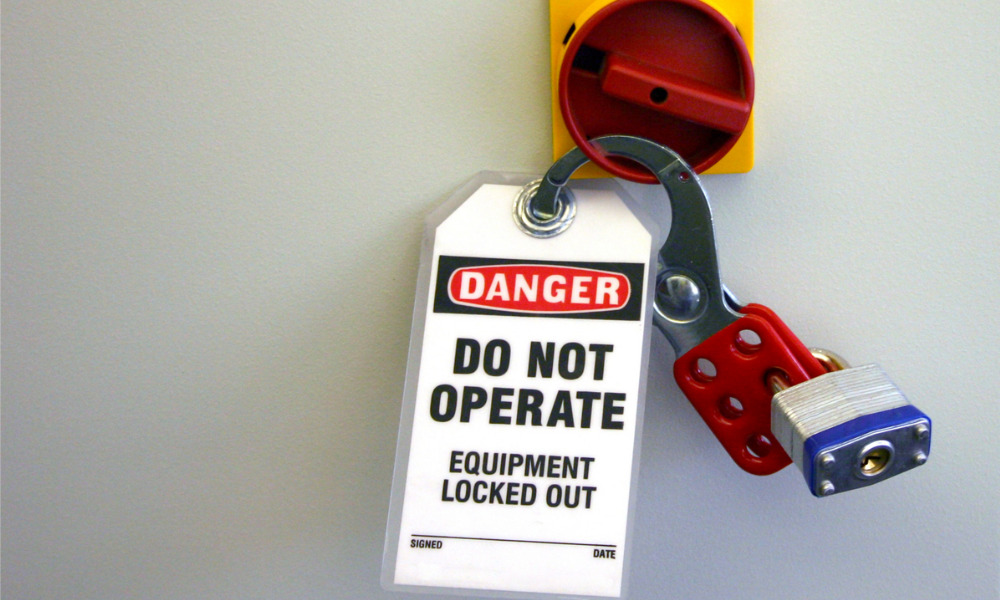Industry expert explains fundamental aspects that are central to preventing injury

Inherently part of workplace safety, lockout/tagout procedures (or LOTO) are key to keeping workers safe. Properly locking out and tagging out equipment means that it is safely separated from its power source. Essentially, lockout is a way to control hazardous energy, while tag out is a labelling process that is always used when lockout is required (as per the Canadian Centre of Occupational Health and Safety).
Having these procedures in place makes it less likely for workers to get injured on the job due to inadvertent or unintended release of hazardous energy. Because it is so important, it is essential to have a strong LOTO program in place to ensure worker safety.
Sean Hennessy, CEO and Founder of TRADESAFE, which offers safety solutions for industrial settings, says that there are four overlooked things when it comes to LOTO safety programs. First of all, having a designated person at hand. “It’s extremely important to have a designated person that takes ownership of the training and implementation of lockout/tagout programs.” This means someone that is held accountable on occasion – and it may be more than just one person.
Secondly, Hennessy says that there are a lot of devices that aren’t safe without being properly installed. “We sometimes get asked very basic installation questions where it’s apparent the person hasn’t had proper training to do a lockout. And I think that can be more dangerous than not doing the lockout at all, because it creates a false sense of security.”
Thirdly, he says that issues also stem from LOTO-specific padlocks which are commonly used in most lockout/tagout scenarios. “Most of the time you’re using a safety padlock which is specifically designed for those applications,” he says, and for these products it is actually safer to have only one key. “Most of the time it is worth the inconvenience of sometimes losing the key and having to replace it with a different one,” says Hennessy, because having multiple keys scattered around adds a level of uncertainty.
Lastly, he says that the best LOTO programs are ones where employees are encouraged to provide feedback. “As facilities evolve – which they always do – so should a lot of programs. And the best way to do that is to receive input from a variety of sources.” There are so many intricacies to creating a really solid program, says Hennessy, but the most important part is to follow it 100 per cent. “It not, then it’s creating this false sense of security” for workers.
LOTO safety has evolved over the last few years, and so has training. Hennessy says that nowadays there are so many great virtual ways to receive training. “Lockout devices themselves with continue to improve over time as different materials and designs are tested,” he says. “But online-based training has created a vast array of ways for employees to absorb the information – and that is what is most critical.”
As well as training and awareness, frequent (internal) inspections are also key to staying safe. “When you think about it, there’s nothing more dangerous than energy, or energizing something that shouldn’t be,” says Hennessy. “We’re humans, we’re prone to error, the best way to stay safe is to inspect our processes and our devices. And that is something that takes internal vigilance.”





